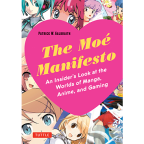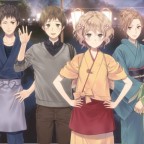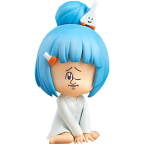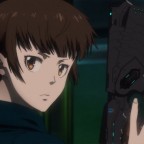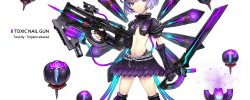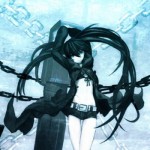Angel Beats! Blu-ray Reviews
Otonashi wakes up in an unknown school with no memories of his past. He is told that he has died and is now stuck in purgatory. It turns out the world he woke up in is a place only deceased children that led misfortunate, often tragic, lives wonder into. If  they participate in the school activities or study too earnestly they will be erased and reborn, losing their former selves to the vicious cycle of life. After learning this harsh truth Otonashi is compelled to join a group of students led by a strong willed high school girl named Yuri. Fuelled by their unsatisfying prior lives, the members of this makeshift group are bent on rebelling against god in search for vengeance. However, it seems that god’s messenger is a petite high school girl called angel. Angel certainly possesses abnormal strength and is reluctant to allow Yuri’s group to continue their lofty lifestyle, but at the same time she appears as a gentle and caring soul. Otonashi immediately begins to doubt the core mission of Yuri’s group, whose days are spent on finding ways to upset and hurt angel. But without the memories of his past life he cannot ascertain which side he should take in this afterlife struggle.
they participate in the school activities or study too earnestly they will be erased and reborn, losing their former selves to the vicious cycle of life. After learning this harsh truth Otonashi is compelled to join a group of students led by a strong willed high school girl named Yuri. Fuelled by their unsatisfying prior lives, the members of this makeshift group are bent on rebelling against god in search for vengeance. However, it seems that god’s messenger is a petite high school girl called angel. Angel certainly possesses abnormal strength and is reluctant to allow Yuri’s group to continue their lofty lifestyle, but at the same time she appears as a gentle and caring soul. Otonashi immediately begins to doubt the core mission of Yuri’s group, whose days are spent on finding ways to upset and hurt angel. But without the memories of his past life he cannot ascertain which side he should take in this afterlife struggle.
In its core Angel Beats! is a sad tale about wondering souls. As Otonashi becomes accustomed to his new surroundings he finds out just how crooked and unnatural the lives of his fellow group friends have become. It seems that this world, with its functioning high school and social life, could be a potentially warm and welcoming place for all the deceased kids. However, since abiding to the world rules and being a good student will cause them to be erased all the children are struggling and cannot enjoy the world around them. Their rebellious approach has led them to craft weapons and actively engage in battle against angel. A lot of them die in combat, but since this is the afterlife they are simply reanimated a few hours late. Thus this purgatory becomes akin to hell. Yuri’s group maintains a balanced life in this hellish place by sticking together and working toward a common objective. Some of the missions this group partakes in can be quite plain, such as securing (stealing) meal tickets from the cafeteria. Others are more combat-based, such as trying to stop Angel from accessing their secret weapon factory.
Taking all of these into account it seems like Angel Beats! should be a pretty grim show and at time it certainly is. Unfortunately, the series is also choke-full of jokes. A third of the lines in this series are puns, a lot of serious talks end up in “funny ways” (such as a person being choked or cut to death), and worst of all – some characters are complete clowns. Most of the series’ characters are normal believable students. But the exceptions will cause you to raise an eyebrow or two. For example, one of the characters is a kunoichi (a female ninja) who spends her days playing with mechanical puppy dolls and responds to everything with the words “how foolish”. The inclusion of several such clown characters and too many jokes tip the balance of the series in a bad way. I really wish the creators would have focused on the tragic sad story and keep the jokes to a minimum. Trust me, even if you do cackle at some of these jokes at one point or the other you will find yourself more annoyed then enjoyed by them.
Despite the faulty clown characters most of the Angel Beats! crew are interesting and well crafted people. They all have different personalities and most of them are memorable. The series really shines when Otonashi finds out the reasons these people ended up in this world. Each member of the group has his or her own tragic life story to tell, and they can be gruesome and shocking. The visual styles used to depict these life stories are unique and distinguished from the rest of the show. They are different because they are meant to show you that you are watching a flashback. But each character has a different kind of flashback with a different visual style, and this serve to enhance the subjective view from which these stories are told. It doesn’t take much time for you to fully acknowledge that you are watching a sensitive and horrific personal experience. It can be artistic at time and manages to be highly emotional and unique. These stories really make you emotionally attached to the working characters and their sufferings. Despite the overuse of pranks and jokes, when the series gets serious it throws an intensive emotional punch in your face. This aspect is further amplified by the fact that although Otonashi spends far less time with angel, she too is a complex and interesting character.
The plot of Angel Beats!, for the most part, is interesting and well-paced. There is almost never a dull moment as Otonashi, Yuri and the other group members try different approaches to solving their predicaments. A couple of episodes continue after the credits, so make sure you don’t skip the ending theme if you want to see these (hint: the first one occurs in episode 5). Some of the episodes might seems uninteresting at first, but always come through together in the end. The series is not too long and not too short. Adding in more episodes would have granted us the opportunity to learn about the past lives of more children, but since it also would have run the risk of making the series too formulaic I’m happy it didn’t make the cut.
On its surface Angel Beats! looks great. The school scenery is very detailed – to a point where you can read what people have written on the blackboards. On several episodes, when Yuri is using a computer software for her mission briefings, you can clearly see a copyright phrase on the bottom of the program screen. In a later episode I saw a poem written on one computer monitors in such tiny letters that it can only barely be read. These small details have little to no impact on the main story, but certainly enrich the overall experience. This overwhelming attention to details, whether or not you choose to stop and appreciate them, is what ultimately makes Angel Beats! excel in the visual department. That and the fact that the series is presented in 1080p at a 16:9 aspect ratio. I did find a small, yet persistent, annoyance with the series’ visuals. The lighting used in daylight scenes in Angel Beats! is too bright. This brightness blurs lines and causes the picture to lose both sharpness and focus. I tried to watch the series on several TVs, as well as a computer monitor, and played with my picture settings, but alas this seems to be a production error. Strange enough, it seems like the Japanese production committee notices this lighting problems, as all but one of the fighting scenes take place at night or in dark places. This eliminated the need to use light sources. At night Angel Beats! looks amazingly sharp and display rich colors. Personally I find that trying to only depict action during the night instead of solving the lighting problems altogether is a very roundabout approach, but it works nonetheless.
The opening and ending themes are a spectacle to behold, and their music is even more enjoyable. The opening theme My Soul, Your Beats! relies heavily on a piano and violins. A variation of the opening theme, used only in episode 4, turns the subtle classic song into a hard rock song. I enjoyed both of them very much. But the ending theme Brave Song went even beyond that – it made me cry. Take the time to listen and fully understand this song’s words and you should understand why I felt the way I did. The ending theme also serves as an attendance list for the series. It shows all the members in Yuri’s group and changes every episode to accommodate the changes in the group’s members list. Alongside these two songs there are a couple more beautiful insert songs in this series, most of which are fully voiced. There are some hiccups in the positioning of the songs though. Some of them end abruptly when a certain scene ends or are used for inappropriate scenes, but they nevertheless stand out. Angel Beats! manages to have an impressive and touching sound track.
I found two major problems in the Blu-ray itself. The series’ menu contains a list of all the episodes for you to choose from, as well as an audio options sub menu. Pushing the audio button will take you to a separate sub menu where you can choose between English DTS HD Master audio and Japanese DTS HD Master audio with subtitles (both audio tracks support stereo only). However due to poor menu engineering you cannot click on the Japanese audio button. The Blu-ray is set to run in English and if you try to move your cursor to the Japanese icon it will close the audio menu instead. This error is present in both Blu-ray discs that comprise this set. You can still set the audio and subtitle tracks from within the series while it plays, and I do recommend that you do so, because the English dub is mediocre at best. If you choose to watch the series in English be prepared to hear a lot of insert songs in Japanese, because these weren’t dubbed. The (yellow) Japanese subtitles on the Japanese audio track are very good and watching the series in one consistent language is the better choice. Sentai Filmworks should have made the Japanese audio and subtitles track the default and screw us over with not being able to reach the English dub instead.
The second disc contains the last episodes in the series as well as the OVA episode Stairway to Heaven episode. Sadly, the second OVA Another Epilogue, which is only 3 minutes long, is missing. Another Epilogue suggests a different ending to the series and is very interesting, but Sentai didn’t include it, forcing you to download it off the internet if you want to see it. The positioning of the OVA episode Stairway to Heaven in the second disc is actually the second major problem I had with this set. Without going into lengthy details, this OVA episode should be watched before episode five. However, Sentai chose to locate it after the last episode. As the series ends on a very emotional and closed ending watching this OVA after the series can potentially ruin some of the experience for you. Moreover, the OVA is a filler episode full of jokes and derived of substance. Sentai’s decision to locate it in the second disc is abysmal. The second disc also contains an extras menu, which has some trailers as well as clear opening and ending themes. Only the regular version of My Soul, Your Beats! received the clear opening theme treatment, which is a shame because the rock version is quite unique. It’s even more shameful considering there are two versions of the clear ending theme – a video showing some scenes from the series with Brave Story as the background music and the proper ending theme as seen in the show. You have to fast forward the first video to get to the proper clear ending theme and frankly I have no idea why they added that custom AMV in the first place. You might have guessed by now, but I was not impressed at all by the way Sentai handled the menus for the Blu-rays. They are bad to the point they can actually damage your viewing experience. This all goes to show that sometimes even a seemingly mundane thing such as a menu layout can spell the difference between a perfect release and a poor one.
Angel Beats! is a compelling series from beginning to end. It has its share of faults: Sentai’s menu design can harm your viewing experience, and so can the bad jokes and brightness issues that appear during the show. But these pale in comparison to the emotional story, the amount of detail that went into the visuals, the excellent music and the interesting flashbacks. The overall experience achieved by the series’ premise doesn’t disappoint. Angel Beats! might not be the best anime masterpiece out there, but will nonetheless leave you with a powerful impression.
Pros:
– Immersive plot.
– Emotionally moving.
– Excellent music and detailed visuals.
Cons:
– Includes too many unfitting jokes.
– Several scenes have brightness issues.
– One OVA is missing and the other one is misplaced.
Final Score: 9.5/10
Product Information: Angel Beats! Complete Collection Blu-ray. Published by Sentai Filmworks. Release Date: July 26, 2011.
Review Equipment: Samsung 32-Inch LCD HDTV (LA32B530) connected to a PlayStation 3 using an official Sony HDMI cable.





